Description
GONADORELIN (GNRH)
Gonadotropin-releasing hormone peptide hormone (GnRH; or also known as luteinizing hormone-releasing hormone (LHRH)) is a gonadotropin-releasing hormone receptor agonist. The international non-proprietary name for gonadotropin-releasing hormone dosage form is Gonadorelin; and this drug is a form of endogenous GnRH and is identical to it in chemical structure.
GnRH is produced by neuroendocrine cells within the hypothalamus. It is considered to be a neuronal hormone because it is produced by certain nerve cells. The key area for GnRH production is the hypothalamic preoptic area (POA), which contains the majority of GnRH-secreting neurons. Similar to GH (growth hormone) secretion, GnRH is also pulsatilely secreted. GnRH induces the release of luteinizing hormone (LH) and follicle-stimulating hormone (FSH) gonadotropins from the anterior pituitary, and their release is the first step in the working system of the hypothalamic-pituitary-gonadial axis, resulting in increased significant in blood testosterone levels in men.
MECHANISM OF ACTION OF GNRH
After secretion of GnRH-secreting neurons in the hypothalamic preoptic area, GnRH is transported by blood through the hypothalamic-pituitary-gonadial axis to the pituitary gland, which contains gonadotropic cells, with receptive GnRH receptors – a seven receptor G-protein coupled transmembrane called gonadotropin-releasing hormone receptor (GnRHR).
The binding of GnRH to GnRHR subsequently activates the synthesis and secretion of gonadotropins – luteinizing hormone (LH) and follicle-stimulating hormone (FSH) in the pituitary gland. These processes are controlled by the size and frequency of the GnRH pulses, as well as by androgen and estrogen feedback. Low frequency GnRH pulses lead to FSH secretion, while high GnRH pulses stimulate LH release. GnRH is degraded by proteolysis in a few minutes.
GNRH ACTION RESULTS
There are differences in GnRH secretion between females and males. In males, GnRH is secreted in pulses at a constant frequency; however, in women, the pulse rate varies during the menstrual cycle, and there is a large surge of GnRH just before ovulation. GnRH secretion is pulsatile in all vertebrates, and is necessary for proper reproductive function. Therefore, a single hormone, GnRH1, controls a complex process of follicular growth, ovulation, and maintenance of the corpus luteum in the female, and spermatogenesis in the male.
GnRH also affects various sexual behaviors. Elevated GnRH levels lead to increased libido and sexual activity in women. In men, an increase in GnRH induces a sharp rise in testosterone levels, accompanied by all of its typical strong anabolic and androgenic effects.
HYPOGONADOTROPIC HYPOGONADISM
Hypogonadism is a condition in which the male testicles or female ovaries produce little or no sex hormones. Hypogonadotropic hypogonadism (HH) is a form of hypogonadism that is due to a problem with the pituitary gland or hypothalamus. HH is caused by a lack of hormones that normally stimulate the ovaries or testes. These hormones include gonadotropin-releasing hormone (GnRH), follicle-stimulating hormone (FSH), and luteinizing hormone (LH). There are several possible causes of HH such as damage to the pituitary or hypothalamus from surgery, injury, tumor, infection, or radiation; genetic defects; high doses or long-term use of opioids or anabolic steroids; high level of prolactin (a hormone released by the pituitary); severe stress; long-term (chronic) medical conditions, including chronic inflammation or infections; or drug use ..
GONADORELIN MEDICAL USE
Gonadorelin can be used as a diagnostic agent to evaluate the function of the pituitary gland. But its important use is also in the treatment of primary hypothalamic amenorrhea, hypogonadotropic hypogonadism, delayed puberty, cryptorchidism, infertility and impotence, thanks to its strong ability to significantly stimulate the production of sex hormones. But after a transient rise, another continuous or long administration of gonadorelin results in down-regulation of LH and FSH levels followed by a suppression of testicular and ovarian steroid biosynthesis.
Other GnRH analogs, unlike Gonadorelin, are often used in the opposite direction to suppress the production of sex hormones: For example, the GnRH analog called Leuprorelin gradually causes a reduction in GnRH receptor activity and this ultimately results in a decrease in LH and FSH secretion, which leads to hypogonadism and therefore a dramatic reduction in estradiol and testosterone levels regardless of sex, and because of this it can be used to treat breast cancer , endometriosis and prostate cancer.
SCIENTIFIC RESEARCH OF THE POSSIBLE BENEFITS OF GONADORELIN
Treatment for hypothalamic amenorrhea, hypogonadotropic hypogonadism, delayed puberty, cryptorchidism, infertility, and impotence
Pulsating GnRH treatment can resolve hypothalamic-pituitary-gonadal axis problems and restart natural testosterone production
Support muscle growth and maintenance through stimulation of testosterone production
Positive Effects for Spinal Cord Injury Recovery
Neuroprotective effects
GONADORELIN FAQS
What is Gonadorelin used for?
Gonadorelin (similar to GnRH) causes the pituitary gland to release luteinizing hormone (LH) and follicle-stimulating hormone (FSH). They are important for proper development in children and fertility in adults. Therefore, gonadorelin is used in medicine as a diagnostic agent to evaluate the function of the pituitary gland, or also as a treatment for primary hypothalamic amenorrhea, hypogonadotropic hypogonadism, delayed puberty, cryptorchidism, infertility, and impotence.
Can Gonadorelin Restore Testosterone Production?
Yes: Gonadorelin has the ability to properly restore testosterone production when used correctly.
What does GnRH stimulate?
GNRH is a hormone produced in the hypothalamus region of the brain. GnRH moves through the bloodstream and hypothalamic-pituitary-gonadal axis to the pituitary gland. There, it binds to natural receptors ist Gonadotropin releasing hormone receptor (GnRHR). Those receptors signal the pituitary gland to create luteinizing hormone (LH) and follicle-stimulating hormone (FSH).
What promotes the release of GnRH in the body?
Kisspeptin directly signals hypothalamic GnRH neurons through the kisspeptin receptor to release GnRH into the portal circulation, which in turn stimulates anterior pituitary gonadotropes to produce LH and FSH.
What inhibits the release of GnRH?
GnRH neurons are regulated by many different afferent neurons, using several different transmitters (including norepinephrine, GABA, glutamate). For example, dopamine appears to stimulate LH release (via GnRH) in estrogen-progesterone-barley females; dopamine can inhibit LH release in ovariectomized females. Kisspeptin appears to be an important regulator of GnRH release. GnRH release can also be regulated by estrogen. Besitoepiptin-producing neurons have been reported that also express the estrogen receptor alpha.
Testosterone inhibits GnRH?
Yes: A negative feedback system occurs in man with increased levels of testosterone acting on the hypothalamus and anterior pituitary to inhibit the release of GnRH, FSH, and LH.
What are Gonadotropic Cells
Gonadotropic cells are endocrine cells in the anterior pituitary that produce gonadotropins, such as follicle-stimulating hormone (FSH) and luteinizing hormone (LH). The release of FSH and LH by gonadotropes is regulated by gonadotropin-releasing hormone (GnRH) from the hypothalamus.
What are the two Gonadotropic hormones?
Luteinizing and follicle stimulating hormones. Luteinizing hormone (LH) and follicle-stimulating hormone (FSH) are called gonadotropins because they stimulate the gonads – in men, the testes, and in women, the ovaries.
What is the HPG axis?
HPG axis – The hypothalamic-pituitary-gonadal axis refers to the hypothalamus, pituitary gland, and gonadal glands as if these individual endocrine glands were a single entity. The HPG axis plays a critical role in the development and regulation of several of the body’s systems, such as the reproductive and immune systems. Fluctuations in this axis cause changes in the hormones produced by each gland and have various local and systemic effects in the body. The axis controls development, reproduction, and aging in animals. Gonadotropin-releasing hormone (GnRH) is secreted from the hypothalamus by GnRH-expressing neurons. The anterior portion of the pituitary gland produces luteinizing hormone (LH) and follicle-stimulating hormone (FSH), and the gonads produce estrogen and testosterone.
How do GnRH analogs work?
GnRH analogs are GnRH receptor agonists and work by increasing or decreasing the release of gonadotropins by the pituitary gland and the production of sex hormones by the gonads.
What gland does Gonadorelin and GnRH affect?
Gonadotropin-releasing hormone (GnRH) is secreted from the hypothalamus and stimulates gonadotropic cells in the anterior pituitary gland to release luteinizing hormone and follicle-stimulating hormone, which in turn regulate the gametogenic and sterogenic functions of the gonads in men and women.
Does GnRH cause weight gain?
Suppressing sex hormone levels with gonadotropin-releasing hormone (GnRH) agonist therapy can cause fat gain.
How does GnRH reduce estrogen?
Gonadotropin releasing hormone agonists (GnRH) are a type of drug that suppresses ovulation by stopping the production of estrogen and progesterone. For this axis to function properly and result in ovulation, GnRH has to be released in a pulsatile manner.
What is the function of the Gonadotropic hormone?
Gonadotropin-releasing hormone causes the pituitary gland in the brain to make and secrete the hormones luteinizing hormones (LH) and follicle-stimulating hormone (FSH). In men, these hormones cause the testes to produce testosterone. In women, they cause the ovaries to make estrogen and progesterone.
Testosterone stimulates gnRH?
No, Testosterone inhibits gonadotropin secretion: Testosterone and / or its metabolites slow down the LH pulse rate in man and inhibit LH and FSH secretion, presumably by an effect on the hypothalamic pulse generator GnRH, but it may also have a direct action on the pituitary.
Gonadorelin help build muscle?
Yes: Promotes muscle growth; Ipamorelin helps promote the efficient production and use of the body’s natural growth hormones, the main result being: promoting regeneration and rejuvenation within cells, increased lean muscle mass, stronger bones and other benefits mentioned above. .
GONADORELIN FOR MEN DOSAGE
Usual adult dose for medical purposes in treating gonadotropin deficiency and hypogonadotropic hypogonadism conditions is 100 mcg injected once subcutaneously or intravenously as a single dose. And the usual adult dose in the treatment of amenorrhea is 5 mcg every 90 minutes (range 1 to 20 mcg), administered intravenously by pump for 1 minute, every 90 minutes for 21 days.
Gonadorelin overdose or misuse leads to a decrease in LH and FSH levels and subsequent hypogonadism – a decrease in the functional activity of the gonads, which leads to a decrease in the production of estrogen and testosterone.
Gonadorelin should only be administered by a healthcare provider, and when used, the response to this medication should be monitored with LH, basal LH, or serum sex steroid levels during therapy as needed.
OVERVIEW
Gonadotropin is an analog of the endogenous peptide hormone GnRH (gonadotropin-releasing hormone). Gonadorelin (GnRH) binds to its native Gonadotropin releasing hormone receptor (GnRHR) receptor, found in the pituitary gland; what activates in the pituitary gland the synthesis and secretion of gonadotropins – luteinizing hormone (LH) and follicle stimulating hormone (FSH). GnRH controls a complex process of follicular growth, ovulation and maintenance of the corpus luteum in the female, and spermatogenesis in the male.
Gonadorelin can be used as a diagnostic agent to evaluate the function of the pituitary gland, or also as a treatment for primary hypothalamic amenorrhea, hypogonadotropic hypogonadism, delayed puberty, cryptorchidism, infertility and impotence, thanks to its strong ability to significantly stimulate the production of sex hormones. In such applications, however, the correct dose of Gonadorelin is very important, because the misuse of Gonadorelin leads to a decrease in LH and FSH levels and subsequent hypogonadism.
To access the information on therapeutic indications and dosage in you must connect with your email and password or register.
Mode of administration
Gonadorelin
Parenteral route.
– SC injection: it will be injected preferably in the lateral wall of the abdomen. For each injection a different point will be chosen.
– Subcutaneous implant: an implant, consisting of a cylinder, will be injected subcutaneously into the abdominal wall. Before the injection, a local anesthetic can be applied.
Nasal route:
– Nasal spray solution: administer from the eighth day of treatment with injectable solution. The absorption of the active ingredient through the nasal mucosa also occurs if the patient has a cold, as long as it is administered correctly. In these cases it is recommended that the nose be blown before administration.
Adverse reactions
Gonadorelin
Loss of libido; headache; hot flushes; pain or local reaction at the site of the injection. Men: impotence, testicular atrophy. Women: uterine bleeding, ovarian cysts, decreased bone mass and matrix, vaginal discharge, vaginal dryness, dyspareunia; sweating, dry skin, acne, hair loss; palpitations, nervousness, sleep disturbances, tiredness, drowsiness, vertigo; abdominal pain, nausea, vomiting, diarrhea, constipation; back pain, limbs, muscle stiffness.
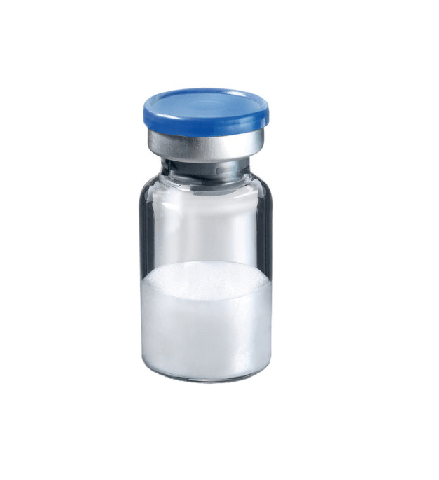
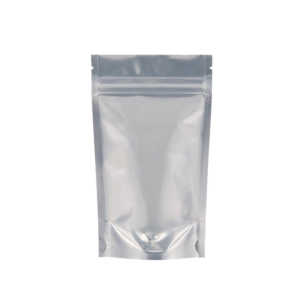
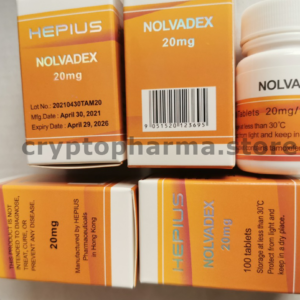
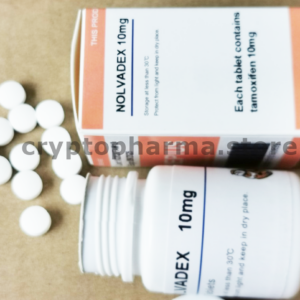
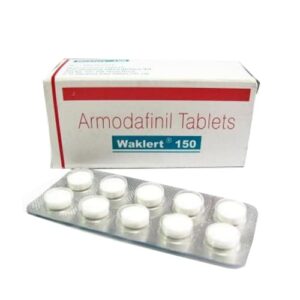
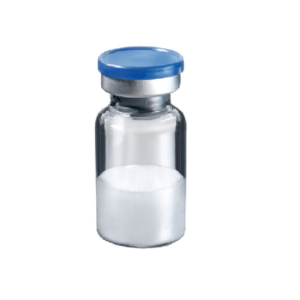
Reviews
There are no reviews yet.